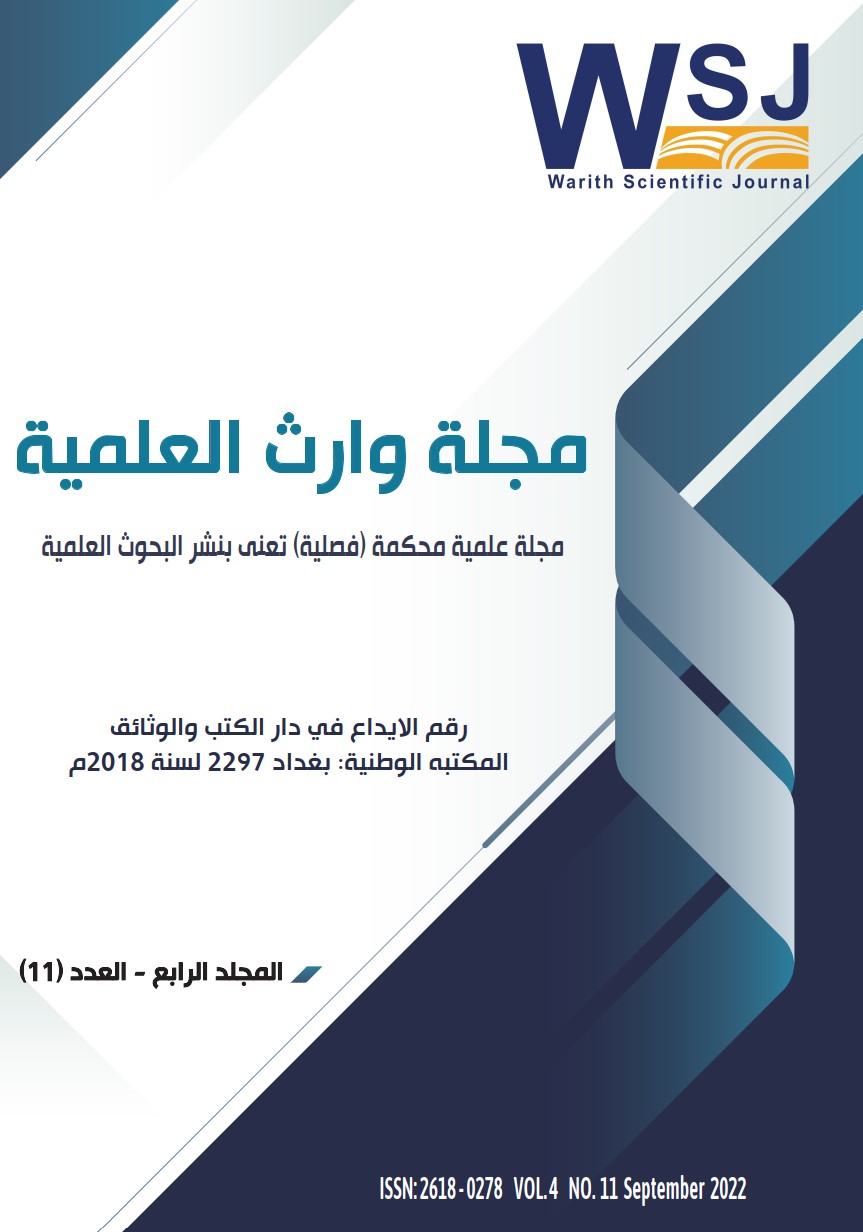Abstract
This research aims to provide the economic unit, the research sample, as well as specialists in the field of cost and management accounting, with in-depth and specialized knowledge about the importance and necessity of integration between of time- Driven activity based costing and manufacturing cycle effectiveness approaches, This integration has a significant impact on reducing costs. The men's clothing factory in Najaf was chosen as a sample for the research, due to the role that the company plays in producing products that directly affect the needs of the citizen. One of the most important conclusions reached by the researcher is to show from the results The application of the TDABC entrance showed that the total cost of the men’s suit product became (72,825.15) dinars, while its cost according to the reality of the cost system applied in the laboratory sample of the research is by (127290.9) dinars, and this means a reduction in cost of (54465.75) dinars. From the application of the MCE entrance, the ratio of the value-adding time to the total manufacturing cycle time is 45%, and this percentage is weak, which indicates that less than half of the working time is a waste and loss borne by the factory. As a result, it was found from the application of practical proposals for increasing the efficiency of the manufacturing cycle by reducing The time that does not add value has a reduction in the time gap that adds value to the time that does not add value. As a result, the lab achieved a result of 79.05% resulting from the application of MCE, and this naturally has a role in eliminating the costs of time that does not add value. For the integration between the two entrances TDABC and MCE in managing time and cost, the role of integration between these two entrances in reducing costs will be presented in this research, provided that this presentation should be preceded by addressing cost reduction in terms of concept, importance, and other relevant paragraphs. lameness.
Keywords
cost reduction
manufacturing cycle efficiency
Time driven activity based costing
Abstract
يهدف هذا البحث الى تزويد الوحدة الاقتصادية عينة البحث فضلا عن المتخصصين في مجال محاسبة الكلفة والإدارية, بالمعرفة المعمقة والمتخصصة حول أهمية وضرورة التكامل بين مدخلي الكلفة على اساس النشاط الموجه بالوقت وكفاءة دورة التصنيع وما يعكسه هذا التكامل من اثر كبير في تخفيض التكاليف. تم اختيار معمل الألبسة الرجالية في النجف كعينة للبحث وذلك للدور الذي تلعبه الشركة في انتاج منتجات ذات مساس مباشر بحاجة المواطن ومن اهم الاستنتاجات التي توصلت اليها الباحثة هي تبين من نتائج تطبيق مدخل TDABC أنّ الكلفة الكلية لمنتج البدلة الرجالية أصبحت بمقدار (72825.15) دينار, في حين ان كلفته بموجب واقع نظام التكاليف المطبق في المعمل عينة البحث هي بمقدار ( 127290.9) دينار, وهذا يعني حصول تخفيض في الكلفة مقداره (54465.75) دينار.وكذلك تبين من تطبيق مدخل MCE أنّ نسبة الوقت المضيف للقيمة الى إجمالي وقت دورة التصنيع هي بمقدار 45% وهذه النسبة ضعيفة مما يدل على أنّ أقل من نصف وقت العمل يعدً هدراً وضياعاً يتحمله المعمل .وبالنتيجة تبين من تطبيق المقترحات العملية الخاصة بزيادة كفاءة دورة التصنيع عن طريق تخفيض الوقت الذي لا يضيف قيمة حصول تقليص في فجوة الوقت المضيف للقيمة عن الوقت الذي لا يضيف قيمة وبالنتيجة فقد حقق المعمل نتيجة نسبتها 79.05 % والناتجة من تطبيق MCE وهذا بطبيعة الحال له دور في التخلص من تكاليف الوقت الذي لا يضيف قيمة.وبالتالي اصبح هناك أثر بارز,للتكامل بين مدخلي TDABC و MCE في إدارة الوقت والكلفة, سيتم في هذا البحث عرض دور التكامل بين هذين المدخلين في تخفيض التكاليف على أن يسبق هذا العرض تناول تخفيض التكاليف من حيث المفهوم , الاهمية , وغيرها من الفقرات ذات العلاقة.
Keywords
الكلفة على اساس النشاط الموجه بالوقت، كفاءة دورة التصنيع، تخفيض التكاليف
